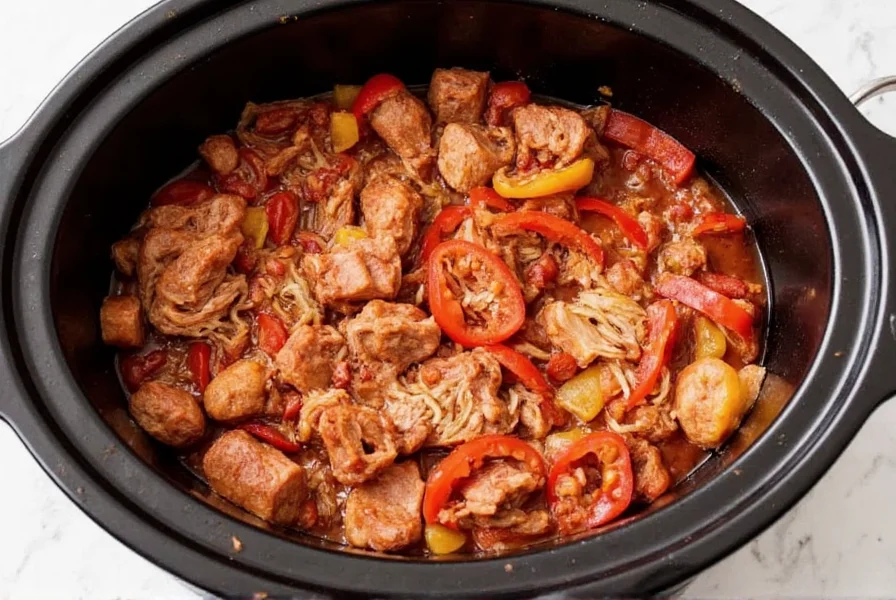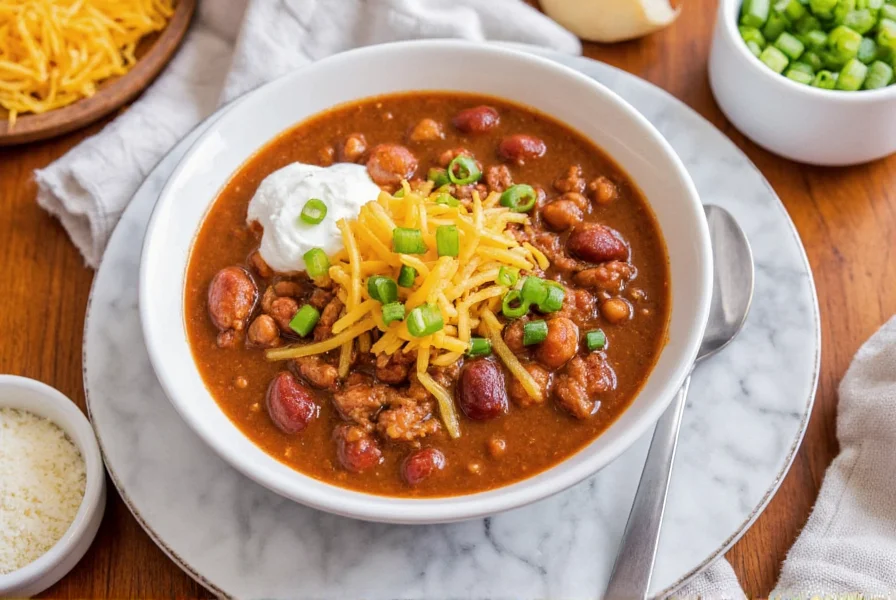When you're searching for the perfect pulled pork chili recipe, you're likely looking for that ideal balance of smoky pork flavor and robust chili spices. This fusion dish has gained popularity as a weekend comfort food that transforms simple ingredients into something extraordinary through the magic of slow cooking. The secret to exceptional pulled pork chili lies not just in the ingredients but in the technique—allowing time for flavors to meld while maintaining that signature tender-yet-substantial texture.
The Essential Components of Authentic Pulled Pork Chili
Creating memorable pulled pork chili requires understanding its foundational elements. Unlike standard chili recipes that rely on ground beef, pulled pork chili uses pork shoulder (also called pork butt), which contains the perfect fat-to-meat ratio for slow cooking. As the collagen breaks down during the extended cooking process, it creates that melt-in-your-mouth texture while keeping the meat incredibly moist.
For those wondering how to make pulled pork chili with restaurant-quality results at home, the spice blend makes all the difference. The most authentic versions incorporate:
- Smoked paprika for depth without overwhelming heat
- Ground cumin for earthy warmth
- Chili powder with varying heat levels
- Garlic and onion powder for aromatic foundation
- A touch of cocoa powder to enhance richness
| Ingredient | Function in Recipe | Substitution Options |
|---|---|---|
| Pork shoulder (8-10 lbs) | Provides marbled fat for tenderness | Beef chuck roast (different flavor profile) |
| Chipotle peppers in adobo | Smoky heat element | Smoked paprika + cayenne (less authentic) |
| Dark beer | Acidity and complexity | Beef broth + 1 tbsp vinegar |
| Fire-roasted tomatoes | Rich tomato base with charred notes | Regular crushed tomatoes |
Step-by-Step Guide to Perfect Pulled Pork Chili

Follow this method for the best pulled pork chili recipe that delivers consistent results every time:
- Prepare the pork: Trim excess fat from a 8-10 pound pork shoulder, leaving about 1/4 inch for flavor. Pat dry thoroughly—this critical step ensures proper searing.
- Sear the meat: Heat oil in a heavy pot over medium-high heat. Sear the pork on all sides until deeply browned (about 3-4 minutes per side). This Maillard reaction creates complex flavor compounds essential for depth.
- Create the chili base: In a separate pan, sauté onions and garlic until translucent. Add all spices and toast for 1 minute until fragrant, then deglaze with dark beer, scraping up browned bits.
- Slow cook: Combine seared pork, chili base, tomatoes, and broth in a slow cooker. Cook on low for 8-10 hours or until pork shreds easily with forks.
- Shred and reduce: Remove pork, shred, and return to the pot. Simmer uncovered for 30-60 minutes to thicken the sauce and allow flavors to integrate.
Pro Tips for Exceptional Results
Mastering slow cooker pulled pork chili requires attention to detail. Here are professional techniques worth implementing:
- Temperature control: Maintain slow cooker temperature between 190-200°F (88-93°C)—hot enough to break down collagen but not so hot that meat becomes stringy
- Acidity balance: Add 1-2 tablespoons of apple cider vinegar at the end of cooking to brighten flavors that may have dulled during long cooking
- Texture management: Reserve some cooking liquid before shredding pork to adjust consistency—too thick and it becomes stew-like, too thin lacks body
- Flavor layering: Add dried spices early but stir in fresh cilantro and lime juice just before serving for vibrant top notes
Serving Suggestions and Variations
The versatility of pulled pork chili makes it suitable for various occasions. For game day gatherings, serve in small cups with toothpicks for easy handling. For more formal dinners, present in shallow bowls with carefully arranged toppings.
Consider these popular authentic pulled pork chili variations:
- Texas-style: Omit beans and tomatoes, focus on meat and chili pepper varieties
- Carolina twist: Add vinegar-based barbecue sauce and shredded cabbage as topping
- Southwest fusion: Incorporate black beans, corn, and avocado
- Smoked version: Finish cooking on smoker for additional wood flavor

Storage and Reheating Guidelines
Pulled pork chili actually improves in flavor after 24-48 hours as ingredients continue to meld. Store properly to maintain quality:
- Refrigeration: Keep in airtight container for up to 5 days
- Freezing: Portion into freezer bags (remove air) for up to 6 months—thaw overnight in refrigerator
- Reheating: Warm gently on stove over medium-low heat, adding reserved broth if needed. Avoid microwave reheating which can make meat tough
- Revitalizing: Stir in fresh lime juice and cilantro after reheating to restore bright flavors
Frequently Asked Questions
Can I make pulled pork chili without a slow cooker?
Yes, you can prepare pulled pork chili in a Dutch oven on the stove or in the oven. For stove top, maintain a gentle simmer covered for 6-8 hours, checking occasionally to prevent sticking. In the oven, cook covered at 300°F (150°C) for 6-7 hours. The key is maintaining low, consistent temperature to break down connective tissues without drying the meat.
What cut of pork works best for pulled pork chili?
Pork shoulder (also labeled as pork butt or Boston butt) is ideal for pulled pork chili due to its high fat content and marbling. This cut contains abundant connective tissue that breaks down during slow cooking, resulting in tender, flavorful meat. Avoid leaner cuts like pork loin, which will become dry and stringy with extended cooking times required for chili.
How can I adjust the heat level in pulled pork chili?
Control heat in pulled pork chili by adjusting ingredients rather than just adding more chili powder. For mild heat, use only 1-2 chipotle peppers in adobo. For medium heat, include both the peppers and some of the adobo sauce. For hotter chili, add cayenne pepper (1/4 tsp at a time) or diced jalapeños. Remember that heat intensifies over time, so wait until the final 30 minutes of cooking before making significant adjustments.
Can I add beans to pulled pork chili?
While traditional Texas chili often omits beans, many regional variations include them. For pulled pork chili, adding beans is a matter of personal preference. If using beans, add 2 cans of drained and rinsed black beans or kidney beans during the last hour of cooking. For authentic Southwestern style, some chefs prefer to omit beans to let the pork flavor shine, while Midwest and California styles commonly include them for added texture and heartiness.
How do I fix pulled pork chili that's too watery?
If your pulled pork chili has too thin a consistency, remove the shredded pork and simmer the liquid uncovered to reduce and concentrate flavors. Create a slurry by mixing 2 tablespoons cornstarch with 3 tablespoons cold water, then whisk into the simmering liquid. Alternatively, mash some of the beans (if using) against the pot side to naturally thicken the chili. For richer texture, blend 1 cup of the chili (without meat) and return to the pot. Always adjust consistency after the pork has been removed to prevent overcooking the meat.











 浙公网安备
33010002000092号
浙公网安备
33010002000092号 浙B2-20120091-4
浙B2-20120091-4